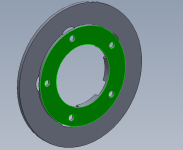jonnydrive said:no fixed gears on my build, I have a regular 10 gears mtb cassette! The only difference of as standard mtb is that there is no freehub: the cassette is fixed with the wheel.
When the wheel spin also the cassette does, in both directions.
Thats exactly what fixed gears means, so you do indeed have fixed gears on your bike. :/




